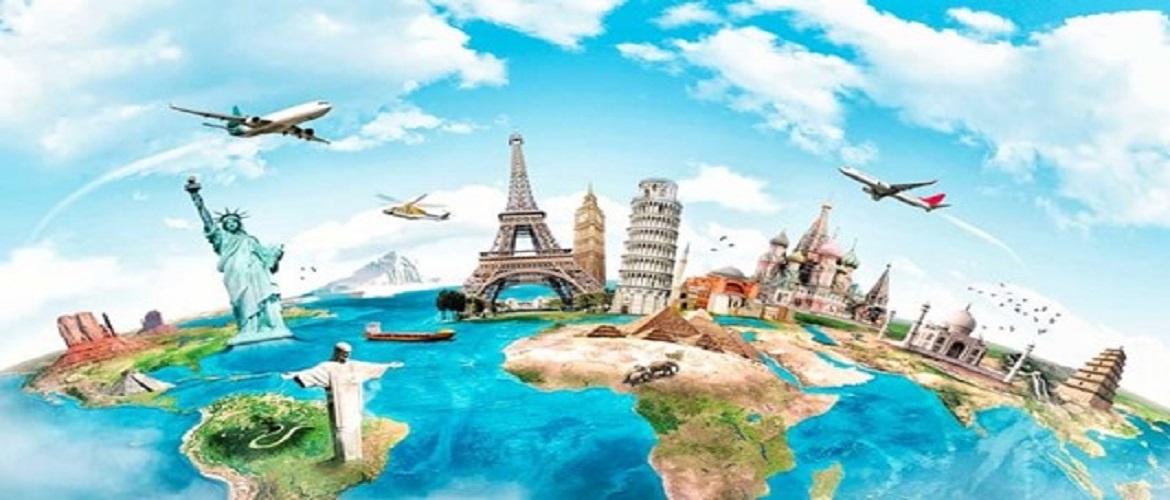The Age of Pandemic Tourism
October 21, 2020 | Expert Insights

The tourism industry is a difficult one to define, for it encompasses several businesses — hotels, restaurants, hotspots, travel agencies, and airlines in the formal, organised sector and a multitude in the informal sector like guides, porters, artists and artisans and the risqué or erotic industry.
The global tourism sector is a vast conglomerate. In 2019, it made up about 10 per cent of the global GDP, contributing over $9 trillion to the global economy (McKinsey & Company, 2020). The number of international tourist arrivals in 2019 was 1.46 billion and global leisure travel spending was over $4 billion (Statista, 2020). The unprecedented COVID-19 pandemic, unfortunately, is reversing this uptick. According to McKinsey, international tourist arrivals are expected to plunge by 60 to 80 per cent this year, and tourism spending is not likely to return to pre-crisis levels till 2024.
BUMPS TO RECOVERY
The tourism industry comes with certain inherent limitations, and this may have compounded the effects of the pandemic. While industries like retail and education proved to be more resilient, promptly switching to online services, tourism has no such alternatives as its services are centred on in-person experiences. Only booking can be made online.
With international travel restricted to "bubble arrangements" and social distancing, a socially intense leisure industry is hard-pressed to circumvent the pandemic-induced obstacles.
Governments have come forward with large stimulus packages in the form of grants and debt relief to businesses to ease the loss burden and ensure continuity in operations. For example, the European Commission has made available 8 million Euros to small businesses affected by the crisis. However, this method of financing alone is not sustainable for businesses. Stimulus packages cannot completely cover losses and future costs of operation. This underscores the need for another financing mechanism- one that, in addition to stimulus packages, can substantially and sustainably cover the losses and cost of future operations. Also, the industry itself cannot remain comatose and expect to be kept artificially alive by the state; it must revive itself with innovative measures while ensuring the safety of its consumers.
CHARTING THE PATH TO RECOVERY
The tourism industry needs to develop an effective recovery plan that enables tourism businesses to resume activities effectively and ensure the safety of the staff and tourists.
Mergers and Acquisitions (M&A). A good way to limit the damage is for businesses to come together and pool their resources. This way, there is less cut-throat competition, and smaller businesses have a higher chance of survival. For example, hotels and restaurants located in the same area can come together to ease competitive tensions and earn higher revenue. In this way, they can easily cover variable costs and will be more robust to shocks in the future. In addition, with M&A, stimulus packages will be better distributed.
Transparent Communication: Extensive and transparent communication is critical to encourage the tourist to venture out of the safety of their confinement. The challenge is to ensure the safety of tourists and staffs. For an effective rebound, people must be willing to travel again, and this can only happen if their safety is ensured. One way to do this is to release extensive travel information that covers:-
(a) Guidelines. Businesses should make it their responsibility to publish information containing federal, state, and local guidelines and regulation. This information should be presented in a cohesive manner. The discrepancies between federal, state, and local guidelines may be confusing and could be reason enough to deter travel. According to McKinsey, one reason for low levels of confidence is confusion over safety measures. Apart from intra-country guidelines, there are guidelines from international organisations such as the World, Travel & Tourism Council (WTTC) and the European Commission for countries in the European Union.
(c) Outbreak. Releasing sufficient information on outbreak conditions is part of the extensive and transparent communication strategy. Customers should have easy access to full information on the number of confirmed cases and new cases disaggregated by states and counties. Other useful information like red-zone areas, quarantine measures, and availability of essential services should be provided.
(c) Implementation of Safety Guidelines. The tourist must be assured of transparent and effective safety measures being implemented through international and local guidelines. Businesses can do this by periodically testing their staff and making available simple home kits that guests can use to track their health. This does not only keep the customer informed, it also increases the customer's perceived safety.
(d) Mitigation Measures. Countries should implement thorough containment and mitigation measures. In cases where there is community spread, tourists should be informed, and mitigation measures to slow the spread of the virus should be implemented. One way to do this is to request tests before entry. Most countries are doing this. Individuals travelling to these countries are required to have a negative test result before departure or get tested on arrival and institutional quarantine until the results are received. For short visits of less than a week, some countries are doing away with quarantine.
CONCLUSION
While intra-country tourism has picked up all over the world, the start of the real revenue generator, international tourism, is still being held in abeyance. While the search of a reliable and effective vaccine could revive this moribund sector, a hope still at least 6 to 8 months away, we may see “tourism bubbles” being created bilaterally between countries where the mutual trust in each other’s health systems is high. This is taking place in Europe and may spread intercontinental too as infection rates are brought under control.








Comments